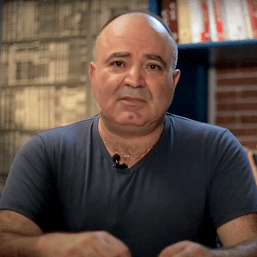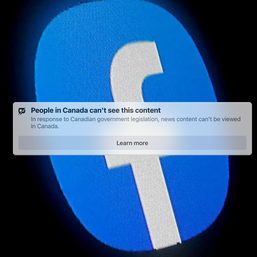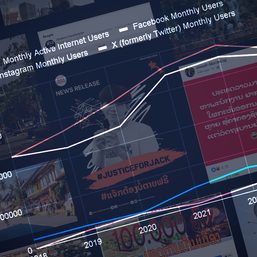SUMMARY
This is AI generated summarization, which may have errors. For context, always refer to the full article.
![[OPINION] Bridging the gap between weather advisories and the public](https://www.rappler.com/tachyon/2020/11/iSpeak-science-for-the-people-November-7-2020.jpg)
The Global Peace Index 2019, a report ranking 163 independent states and territories according to their level of peacefulness, ranks the Philippines as the top country in the Asia-Pacific in terms of overall natural hazard score. In particular, the report cited that 47% of the population are in “areas of high exposure to climate hazards.”
The Philippines sits on the western Pacific basin, the most active tropical cyclone basin in the world. In grade school, we were taught that about 20 storms frequent the Philippines every year. But what does that mean for us Filipinos, and how can we apply this information to our daily lives?
If there are lessons that need to be learned from past tropical cyclones, especially Super Typhoon Yolanda (Haiyan), and just recently, Super Typhoon Rolly (Goni), it is bridging the gap between information and its intended audience – the general public.
For one, weather reports only gain traction when an impending disaster is approaching. They hardly make the news on rather ordinary days. If at all, they are read sloppily on TV and radio newscasts or occupy only a tiny portion of newspapers. But the weather changes. While it may have been sunny yesterday or even an hour ago, that might not be the condition now. Weather advisories fail to serve their purpose when people seek them only when a disturbance is currently affecting them or, worse, after the onslaught. Apart from physical preparations, the best arsenal residents in a particular locality can have is accurate information and its constant supply through whatever means.
Also, we need to change how forecasts are translated into the vernacular. The Philippine Atmospheric, Geophysical, and Astronomical Services Administration (PAGASA), the state weather bureau under the Department of Science and Technology (DOST), is doing a great job in communicating weather disturbances. (Note that these disturbances are not limited to tropical cyclones but also thunderstorm advisories, rainfall warnings, and gale warnings, among others.) But while PAGASA does have regional divisions that cater to specific groups speaking a common language, they need to have a wider reach. For example, local radio and TV stations can contact local PAGASA offices so that the forecast would be more particular to their locality, in the language understood by many.
The translation is lost when the media fails to communicate these products from PAGASA well. For example, the term “lumihis” can mean a change in forecast track, but it does not specify if the forecast track shifted north, south, east, or west. Another example is when reporting a storm’s exact location. Some newsreaders mention “100 kilometro sa may (kilometers from) <name of place>,” which can be vague since it fatally omits the direction and the fact that the stated place is just a reference point and is not the actual location of the storm. Another and more lamentable example is how Manila-based interviews focus more on the effects of a storm on Metro Manila – one of the better examples of “Imperial Manila” dominating at the expense of other provinces. There is also a difference between a cyclone entering the Philippine Area of Responsibility and entering landmass – both are not well-defined when the news report just says “papasok sa Pilipinas.”
Although many do not want to bother themselves with the technicalities, which are at times esoteric, there is a need to break down and simplify these terms so that the public will better understand how disturbances, and the weather in general, behave. For example, a cyclone may be significant in terms of intensity, but one has to look at the diameter – that is, once the cyclone makes landfall, how far from the center will its impact be? It is worth noting, too, that the specific towns a cyclone traverses after making landfall are worth monitoring as much as the town where the cyclone made landfall. Comparisons can also be drawn to better explain how the public should perceive sustained winds. A good example could be the feeling one gets when riding a vehicle and observing the speed registered. In this way, one can realize that a cyclone bearing 100 kph sustained winds is similar to a car going down the expressway at the speed limit. The stereotype of science being limited to classroom discussions and laboratories will change when we come to truly appreciate its value.
Local government agencies also play a crucial role in both relaying much-needed information to the public and acting upon it. It is worth noting how the use of social media has helped disseminate weather bulletins. Helpful, too, are alerts sent through text message by the National Disaster Risk Reduction and Management Council (NDRRMC). However, there is a need to be timelier and to have a broader scope of subscribers.
When one senator downplayed development communication by saying it is “cute” and “archaic,” then it is clear that the problems start from the top and trickle down to the grassroots. When politicians fail to recognize, nay, even blame state science agencies for what they perceive as “inaccuracies” – such as when these agencies resort to blaming these politicians – then we indeed have a bigger problem. The sciences need to have a bigger slice of the budget than what it currently has.
We do not have a lack of talent and potential scientists in our country. But the bureaucracy, and the lack of appreciation, among others, forces scientists or budding scientists out of their field. Worse, some seek greener pastures abroad.
Over time, efforts should be made to break the stereotype that science and technology are just for nerds. If we are to use science to improve lives, then the people must be able to understand it in a way that helps them make informed and better decisions – a science for the people. – Rappler.com
Edward Joseph H. Maguindayao is a graduate student at the University of the Philippines Diliman. He became interested in tropical cyclones after their home was inundated by a storm surge due to Typhoon Caloy (Chanchu) in 2006 and after Super Typhoon Yolanda (Haiyan) struck Visayas in 2013.
Add a comment
How does this make you feel?
![[OPINION] The need for a scientific revolution in the Philippines](https://www.rappler.com/tachyon/2020/10/scientific-revolution-october-17-2020.jpg?fit=449%2C449)



![[ANALYSIS] Investigating government’s engagement with the private sector in infrastructure](https://www.rappler.com/tachyon/2024/04/tl-gov-private-sectors-infra-04112024-1.jpg?resize=257%2C257&crop=435px%2C0px%2C1080px%2C1080px)
![[Newsstand] The media is not the press](https://www.rappler.com/tachyon/2024/04/tl-media-is-not-the-press-04132024.jpg?resize=257%2C257&crop=281px%2C0px%2C720px%2C720px)
There are no comments yet. Add your comment to start the conversation.